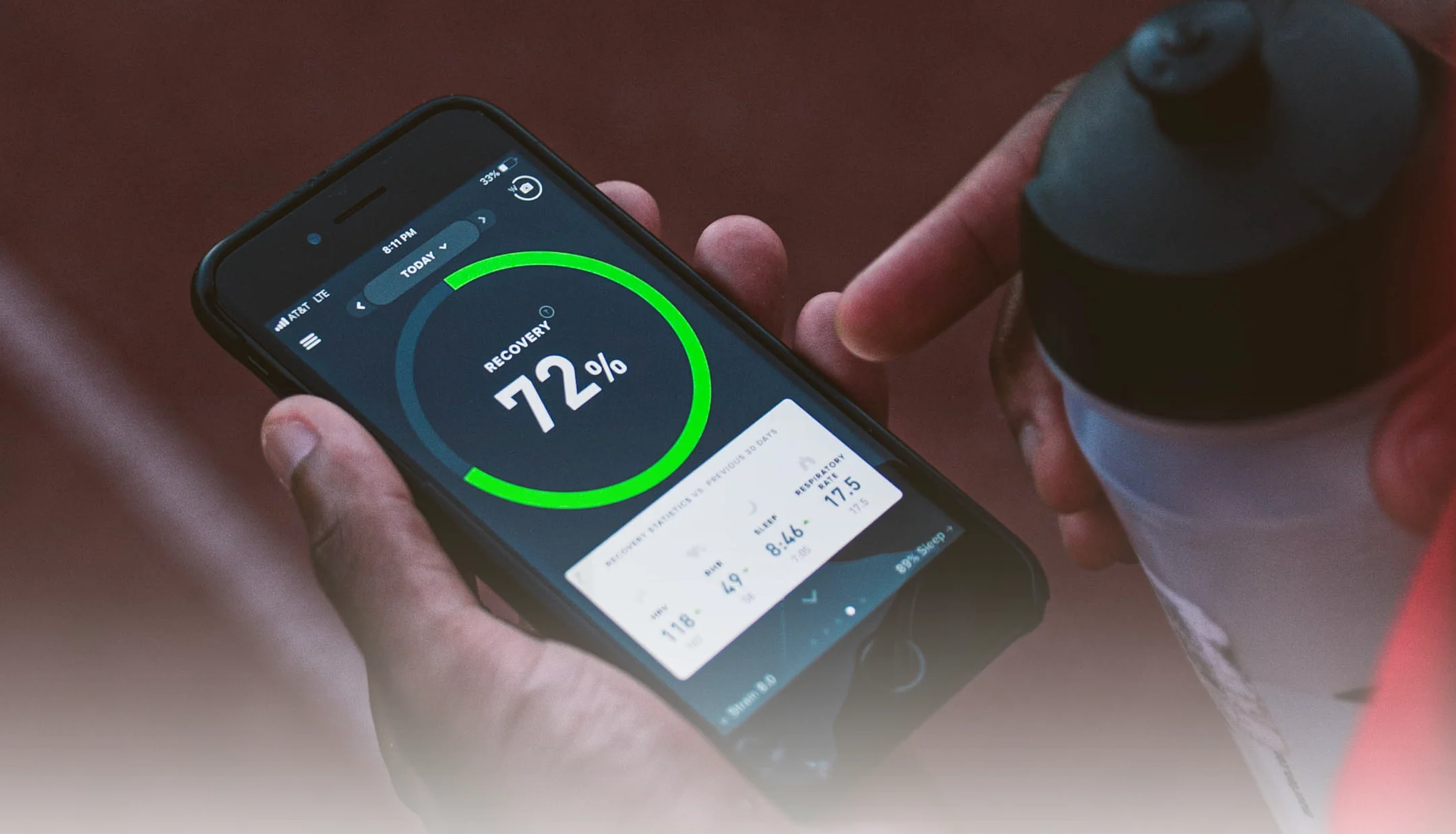Topics
- Post
- Recovery
- Respiratory Rate
Podcast No. 84: Recovery Algorithm Update

Kristen Holmes and Emily Capodilupo are back to detail a critical update to the WHOOP recovery algorithm.
We have long calculated recovery by tracking heart rate variability, resting heart rate, and sleep performance. Now, we are excited to add respiratory rate as the fourth pillar of our recovery score. This powerful update reflects the latest research in health monitoring and provides members with an even deeper understanding of their bodies. Kristen and Emily discuss all of our findings and share their tips and tricks for getting better recoveries on a daily basis. Stay healthy, stay in the green, and keep your respiratory rate flat.
Recovery Update Podcast Show Notes:
2:17 - WHOOP and COVID-19 Research. Check out the research Emily and her team have done on COVID-19 detection and how WHOOP data changed at the onset of the coronavirus outbreak in the United States. 3:48 - What is the WHOOP Recovery Score? “The goal of the recovery score is to measure how ready your body is to adapt to a training stimulus. This is highly correlated with how ready you are to perform. It was originally built to predict athletic performance, but over years of research we’ve discovered that readiness to perform is actually completely independent of the type of performance that you’re going to have. We’ve seen the things that predict athletic performance predict academic performance, predict performance in the military, predict performance for surgeons, and also just sharpness.” 5:47 - Readiness. “The recovery score is looking at something holistic. What it’s actually primarily looking at is your autonomic nervous system balance and, at your core, how ready your body is to respond to different stimuli. That readiness can apply to the perfect tennis swing, it can be applied to reading someone else’s emotions and making an appropriate response, it can be applied to creativity, all of these different things.” 7:57 - The 3 Pillars of WHOOP Recovery. Emily details the science behind heart rate variability, resting heart rate, and sleep performance and how those data points function together to create the WHOOP recovery score. 12:05 - Adding Respiratory Rate to Recovery. Emily shares how our research with respiratory rate and COVID-19 led to examining respiratory rate beyond the scope of coronavirus. “We were curious, outside of COVID-19, is respiratory rate predictive of next-day performance?” WHOOP then examined millions of respiratory rate data points from before the pandemic to determine if respiratory rate can factor into recovery. 14:47 - Findings. “Respiratory rate contains information that’s useful in predicting next-day performance, but that is independent of the information that we’re already capturing in resting heart rate, heart rate variability, and sleep. So by incorporating it as a fourth metric in the recovery score, we’re able to have our predictive performance and actual performance matchup more closely. You can think about that as increasing the accuracy of the recovery score.” 16:59 - What Makes Respiratory Rate Go Up? Kristen and Emily note that respiratory rate can increase due to a variety of factors, such as air quality, altitude, allergies, or a lower respiratory tract infection. 21:39 - Increased Respiratory Rate, Decreased Performance. “When respiratory rate was elevated, the next day performance was decreased,” Emily said of her team’s research. “So by modeling that, even having nothing to do with COVID-19, we were able to increase the utility of the recovery score.” 21:57 - On the Move. Respiratory rate has been moved from the sleep section to WHOOP app to the recovery page. “Now [WHOOP members] will see it when you click recovery alongside heart rate variability, resting heart rate, and sleep.” 25:32 - Tracking Respiratory Rate in COVID-19 Cases. Emily details what WHOOP has seen in the data of members who have been diagnosed with COVID-19. “You see it’s this subtle rise [in respiratory rate] and then right at 2 days or 1 day before symptom onset that subtle rise turns and you get this hockey stick growth. It’s subtle, subtle, subtle and then it spikes up really high.” 28:17 - Baselines. “[WHOOP provides you] a robust baseline that you can compare what’s happening today against. That gives you the context that you need to understand how changes might be influencing your performance on a daily basis.” 28:40 - Independent of the Pandemic. “This change that we made to the recovery score is not at all meant to predict COVID. The recovery score change specifically was only used using data from [fall 2019], long before COVID infected any of our members. Don’t confuse a low recovery score with WHOOP saying that you have COVID-19. That’s absolutely not the intent and not what’s going on. … Keep in mind, red recovery scores existed long before COVID and will continue to exist long after COVID.” 30:46 - Striving for Accuracy. “The validation efforts outside our four walls at WHOOP have been, I think, really important and powerful and have absolutely separated from other wearables on the market. One of those things is how well we do sleep. … We did a robust third party validation, the University of Arizona was the institution who led this validation effort, it was a sleep validation but within that we were also able to validate respiratory rate. It was within one breath per minute of the gold standard. We are the only wearable on the market who has respiratory rate validated by a third party.”